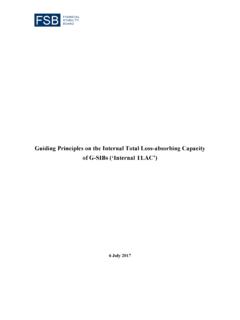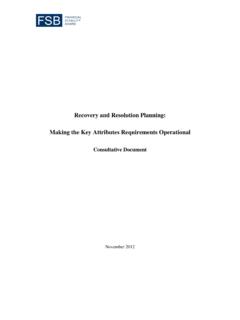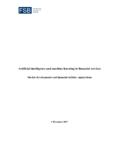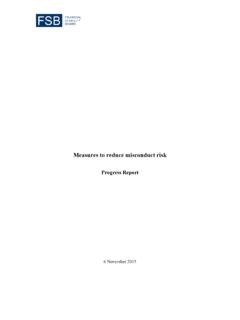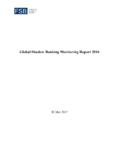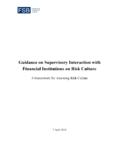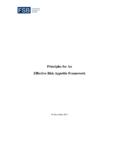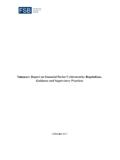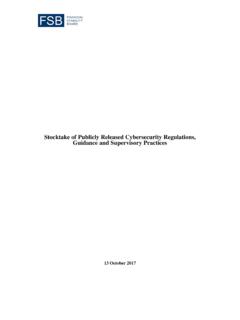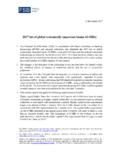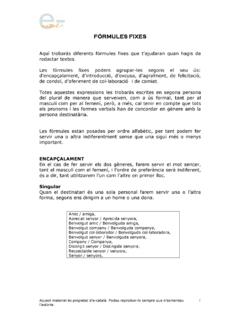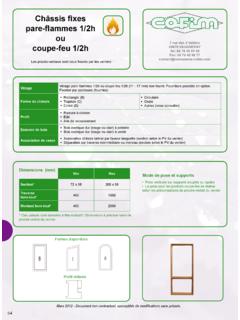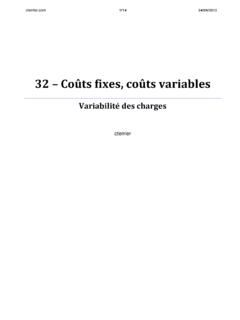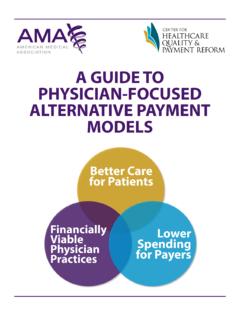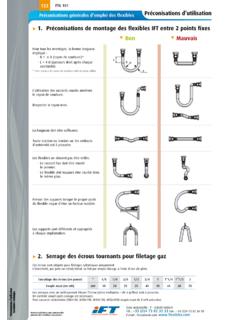Transcription of FX Benchmarks - Final Report and attachments - 30Sep2014
1 30 September 2014. Foreign Exchange Benchmarks Final Report Content Page Executive Summary .. 1. Summary of 3. 1. Introduction to the foreign exchange fix' problem .. 5. 2. The construction of foreign exchange fixes .. 7. a. WM/Reuters .. 8. Trade Currencies .. 8. Non-trade Currencies .. 10. Forward and NDF Currencies .. 11. b. ECB .. 11. 3. How the market uses foreign exchange fixes .. 12. a. Asset Managers .. 12. b. Non-financial corporates .. 14. c. Index providers .. 15. 4. Observed characteristics of market price movements .. 16. Data Analysis .. 16. Trading Patterns during the Day .. 16. Trading Patterns around the WMR 4pm London Fixing 18. 5. Considerations of alternative fix calculations .. 20. 6. IOSCO assessment of 21. 7. Recommendations .. 23. a. Benchmark calculation .. 24. b. Recommendations from the IOSCO 26. c. Foreign exchange reference rates set by central banks .. 26. d. Market infrastructure.
2 27. e. Behaviour of Market Participants .. 28. Appendix 1: Alternative methods for calculating benchmark rates of market prices .. 32. Appendix 2: Members of the FSB FX Benchmark Group .. 33. Appendix 3: Review of the Implementation of IOSCO's Principles for Financial Benchmarks by WM in respect of the WM/Reuters 4pm Closing Spot Rate .. 35. ii Executive Summary In 2013, concerns were raised about the integrity of foreign exchange (FX) rate Benchmarks . These concerns stemmed particularly from the incentives for potential market malpractice linked to the structure of trading around the benchmark fixings. As a result, the FSB Plenary formed a working group chaired by Guy Debelle of the Reserve Bank of Australia and Paul Fisher of the Bank of England 1 to focus on foreign exchange Benchmarks . The mandate of the group was to undertake analysis of the FX market structure and incentives that may promote particular types of trading activity around the benchmark fixings.
3 The group was tasked to propose possible remedies to address these adverse incentives as well as to examine whether there is a need and scope to improve the construction of the Benchmarks themselves. The work of the group was completely independent of the various conduct investigations into allegations of manipulation of FX being undertaken in different jurisdictions and the group did not have access to the evidence being considered by the relevant authorities. The group progressed its work in part by engagement with a range of FX market participants across the globe. This included a cross-section of global and local asset and money managers, non-financial corporates and benchmark providers in FX and other markets, as well as FX. trading platforms, banks and investment banks. An interim Report was published in July for wider public consultation so that all market participants had a chance to submit their views and comment on the proposed course of action.
4 2. A consistent view of market contacts is that there are two FX Benchmarks which have pre- eminence in the global market. The WM/Reuters (WMR) 4pm London fix, produced by the WM Company is by far the dominant benchmark being used, not just in FX, but also as a key input in multi-currency equity, bond and credit indices. The euro foreign exchange rates set by the ECB at 2:15pm CET (henceforth the ECB's reference rates) are also used by a wide range of participants, specifically non-financial corporates, but are thought to be also important for the non-deliverable forwards market. The group obtained transactional and quote data from the two main electronic trading platforms, EBS and Thomson Reuters Matching, which are used to calculate the WMR fixes. These data indicated that intraday turnover increases markedly at the time of the WMR. London 4pm fix and to a lesser extent around the ECB's reference rates.
5 The WMR Benchmarks are, at least for the most widely used currencies, based on actual trades, supported by transactable bids and offers extracted from electronic trading systems. In this respect they are quite different from a benchmark such as Libor which does not benefit from the same market liquidity and, prior to recent reforms, was based on panels of banks quoting their estimate of funding rates. Even for the less well traded currencies, active bids and offers are used. The issues arising are therefore quite different in nature from those relevant to Libor. 1. See Appendix 2 for the members of the group. 2. Responses to the interim Report can be found at: 1. FX Benchmarks are used by market participants for a variety of purposes, but most notably for valuing, transferring and rebalancing multi-currency asset portfolios. In particular, the mid- rates produced by WMR are embodied in the construction of published indices used for tracking multi-country/currency portfolios of bonds, equities or credit instruments, and hence are implicit in many investment mandates.
6 That usage incentivises asset and other money managers particularly those with passive mandates which aim toward the replication of an index to ensure that their FX dealing intermediaries (usually but not always banks) execute their foreign exchange trades at the same mid market price as recorded at the fix. That eliminates any tracking error' arising from foreign exchange, when the investor has chosen to invest in the performance of some other asset such as bonds or equities. Other users, such as some sovereign wealth funds, or corporates (which often do not have active foreign exchange dealing desks), also tend to use the same approach of trading with their dealers at a guaranteed published fix price, in order to establish transparency of execution. The result of this activity by their clients leads to a concentration of trading orders being transmitted to dealers, in large part shortly ahead of the fixing time.
7 Dealers generally accept these orders and execute them in the market as principal bearing the consequent price risk, rather than executing them in the market as agent on behalf of the client. In order to manage the risk associated with this client order flow, dealers hedge by executing foreign exchange transactions in and around the calculation window, which results in the large spike in trading volume. This creates a market where the dealer is agreeing to execute these orders at an unknown price, which is established subsequently during the fixing calculation window. That price should be the clearing price which reflects the balance of supply and demand going through the market at that time and therefore prices should move as necessary, even if only temporarily, in response to these flows. In most cases, the dealer agrees to give the client the mid-rate of this (as yet unknown) fix price, whether the customer is buying or selling.
8 At a minimum, this market structure creates optics of dealers trading ahead' of the fix even where the activity is essentially under instruction from clients. Worse, it can create an opportunity and an incentive for dealers to try to influence the exchange rate allegedly including by collusion or otherwise inappropriate sharing of information to try to ensure that the market price at the fix generates a rate which ensures a profit from the fix trading. That is, it is the incentive and opportunity for improper trading behaviour of market participants around the fix, more than the methodology for computing the fix (although the two interact), which could lead to potential adverse outcomes for clients. To help address the issues arising from this market structure, the group is proposing a number of recommendations for reform in the foreign exchange market in the following broad categories: a. The calculation methodology of the WMR benchmark rates b.
9 Recommendations from an IOSCO review of the WM fixes. c. The publication of reference rates by central banks. d. Market infrastructure in relation to the execution of fix trades. e. The behaviour of market participants around the time of the major FX Benchmarks (primarily the WMR 4pm London fix). 2. Summary of recommendations 1. The group recommends the fixing window be widened from its current width of one minute. WM should determine the appropriate width in consultation with market participants. The group notes that the median suggestion from market feedback was that a five minute calculation window centred on the hour for the major (trade) currencies could be appropriate. For less liquid (non-trade) currencies, the group recommends the window be wider than for the major currencies to incorporate an adequate number of observations. 2. The group recommends that WM should incorporate price feeds and transactions data from a broader range of sources to further increase its coverage of the FX market during the fixing window, provided it is assured that the additional sources are of sufficient quality and are representative of the market.
10 WM should regularly assess its coverage as market structure continues to evolve. In that regard the group also proposes that in the short term, WM develop its methodology to utilise the transactional and quote information from both Thomson Reuters Matching and EBS, wherever both are available. 3. WM should expand their consultation activities to include a named user group to consider the proposed changes to the calculation methodology and to ensure it remains appropriate going forward. 4. The group supports the findings of the IOSCO review of WM and endorses the recommendations for improvement contained in that review. 5. The group considers that, where central banks publish reference rates, it is the responsibility of each to set internal procedures and they should at least take note of guidance from the IOSCO principles, especially where central bank reference rates are intended for transaction purposes.
